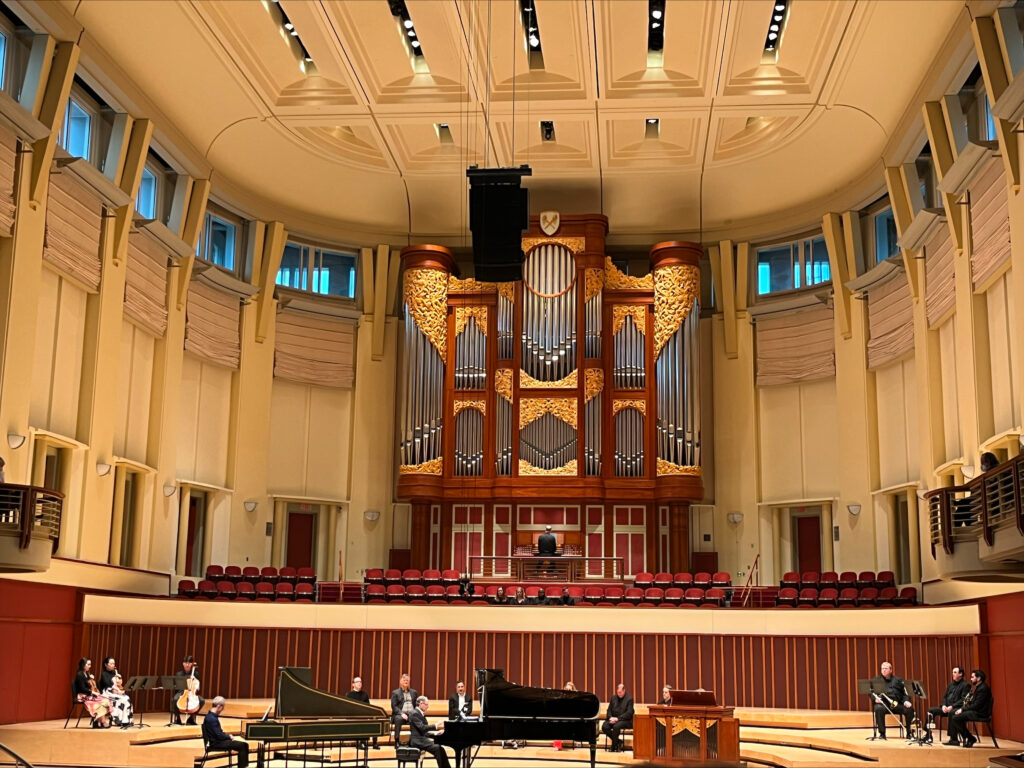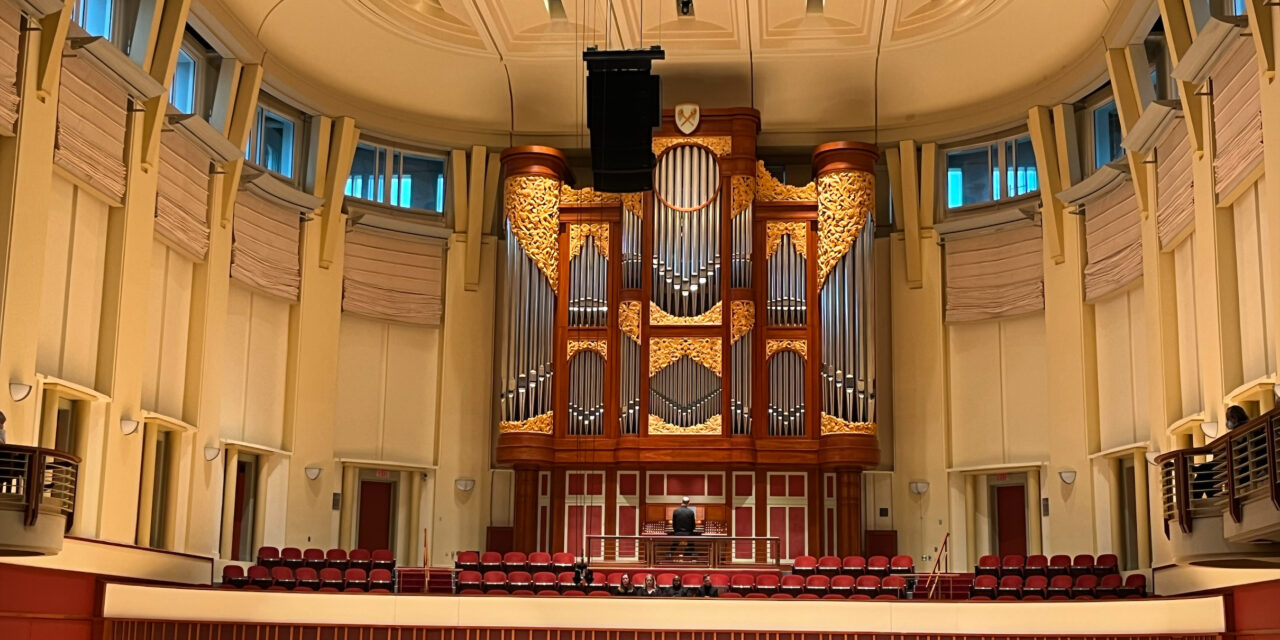On the same night of the 2023 Super Bowl, another “bowl” took place in the Emerson Concert hall at Emory’s Schwartz Center for Performing Arts. “The Bach Bowl,” hosted by the Emory Chamber Music Society of Atlanta (ECMSA), is a classical concert dedicated to composer Johann Sebastian Bach. While this “bowl” may seem serious in comparison with its athletic counterpart, the concert is in fact a very merry, modern and energetic celebration of the 282-year-old legacy of Bach’s “Goldberg Variations.”
ECMSA Founder and Artistic Director William Ransom opened the concert with a fictional letter from Bach, explaining the famous composition. Though the letter was obviously not written by Bach himself, the novel representations from the musicians at the bowl infuse a more dynamic understanding into Bach’s music. “Goldberg Variations” is a series of compositions consisting of an aria and 30 variations, originally written for harpsichord performance. An aria is a piece with a single voice part, while the variations add more voice parts on the basis of the aria. The variations sound accurate, peaceful and reassuring because they are all adaptations of the beginning “Aria.” The only differences in the variations are the diverse combinations of chord progressions and bass lines in the aria. Bach’s music was only available for people who went to the few churches for which he wrote music and as such has largely been played in standardized style due to its religious nature. In contrast, the musicians in the concert bring a more energetic, busy and colorful fusion to the original notes.
The performance started with a faster version of aria performed by Ransom, followed by Jens Korndörfer’s representation on the Wortsman Memorial Organ. The pipe organ stretched toward the ceiling of the Emerson Concert Hall, breathing out grand and divine music for the audience. The variations also included performances by the Vega Trio, a trio of violin, viola and cello; the Brass Trio, a trio of trumpet, horn and trombone; jazz piano; and the Graves Memorial Portative Organ, a smaller pipe organ. The Vega Trio and the Brass Trio added a special layer to Bach’s keyboard composition, as they brought the harmony and grandeur usually characteristic of chamber music to a series of originally softer and lighter piano notes. On the other hand, the jazz piano added a sense of impromptu and a stroke of brighter color to the original music through its syncopations, imbalanced tempos and ornamental notes.

The Emory Chamber Music Society held the annual “Bach Ball” in Emory University’s Schwartz Center for Performing Arts on Feb. 12. (Amiee Zhao/Contributing Writer)
The two harpsichord performances by Peter Marshall stood out to me the most. In a concert full of variations, I didn’t expect to hear Bach’s music performed on the original musical instrument for which it was written. Marshall paid a very truthful tribute to Bach’s music, with the song progressing at the original tempo and musical style, slowly and clearly. The two harpsichord performances acted as a bridge that connected the past with the modern, mediating the audience’s excitement for novel adaptations by paying respect to the peaceful sound of the original version. The concert thus created a fusion of the modern and the past, the novel and the traditional, the exciting and the peaceful—a testament to Bach’s legacy and the power of music to stretch across time.
Another aspect of the performance that struck me was its deviation from the original composition. The 18th, 19th and 22nd variations performed by the Glenn Memorial Chancel Choir broke the limits of Bach’s music by choosing to use vocals for his songs that were originally intended for the keyboard. The different vocal parts in Bach’s music are interconnected, making his music adapt particularly well to an a cappella group. The choir went beyond just mimicking keyboard sounds, they depicted the beauty of humanity by showcasing the natural sounds of breath clearly. The singing reminded me of the sounds of people talking. When performed by these human voices, the music became more dynamic, because not only did it consist of accurate and mechanical voice parts, but it also acted as a natural harmony created by the power of coordination among choir members, choir and audience.
The concert concluded with an original keyboard version of “Aria,” resembling the first song in the concert and returning to the simplicity and divineness of Bach’s time. Bach, who was also passionate about mathematics, calculated each note carefully. Not only did he create more traditional and calming music for the church, but he also explored various creative variations, through the intricate coordination of his notes. The event embraced a new possibility for a classical music concert: connecting the past with the present, learning the legacy through novel interpretations.
At the end of the aria, the audience gave a standing ovation. My vision was partly blocked by the crowd; looking up, I could only see the high golden organ with the Emory logo on top of it. Suddenly, it all felt surreal: listening to a classical concert that fuses so many styles of music in one of the most dynamic and modern places in Atlanta. In that moment, I was empowered by Bach, by the endless possibility of music and by the notes that stretched and adapted throughout time.
Amiee Zhao is from Shanghai, China. At the Wheel, she is Emory Life editor and a writer for multiple sections. Outside of the Wheel, she enjoys traveling and reading non-fiction. She is also involved in OxBroadway and Autism Advocacy Organization.







